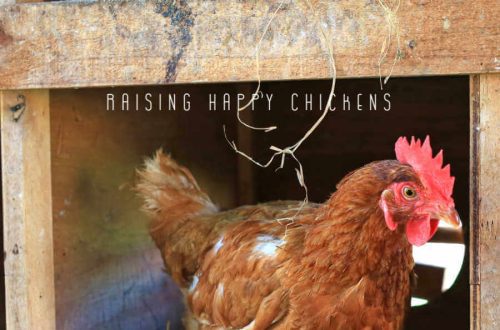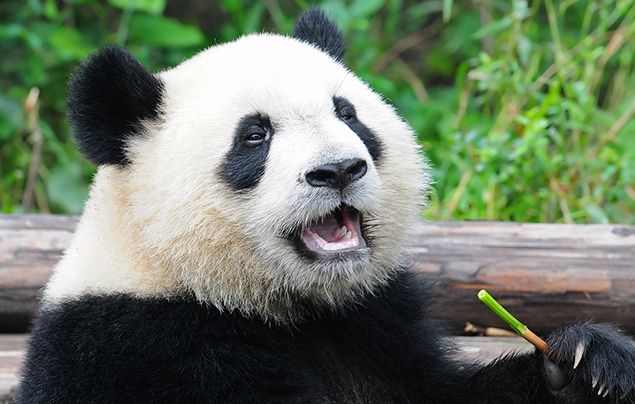
10 interesting facts about pandas – adorable bears from China
An unusual animal of black and white color attracts many – it is often photographed for calendars, covers of notebooks and notepads. They also become circus performers or are placed in a zoo, which cannot but upset …
Because of his remarkable costume, the bear is adored all over the world! The giant panda also has the second name “bamboo bear” – this is due to the fact that the animal prefers to eat bamboo, spending at least 12 hours on this activity. The bicolor charming bear, by the way, has a distant relative – the red panda, outwardly it is very different, but not inferior to the big one in beauty.
We’ve rounded up 10 of the most interesting facts about pandas, curious and adorable bears native to China.
Contents
- 10 The bamboo bear is the only extant species of the genus Ailuropus.
- 9. National Emblem of China
- 8. Front paws – with a “thumb” and five ordinary
- 7. They belong to the order of carnivores, but eat mainly bamboo.
- 6. Spend up to 12 hours a day on food
- 5. China provides for the death penalty for killing a panda
- 4. The red panda, despite its predatory nature, prefers young bamboo
- 3. In India and Nepal, the cat bear is a pet
- 2. Long disputes about the relationship to one or the other family
- 1. The red panda is a distant relative of the big panda.
10 The bamboo bear is the only extant species of the genus Ailuropus.
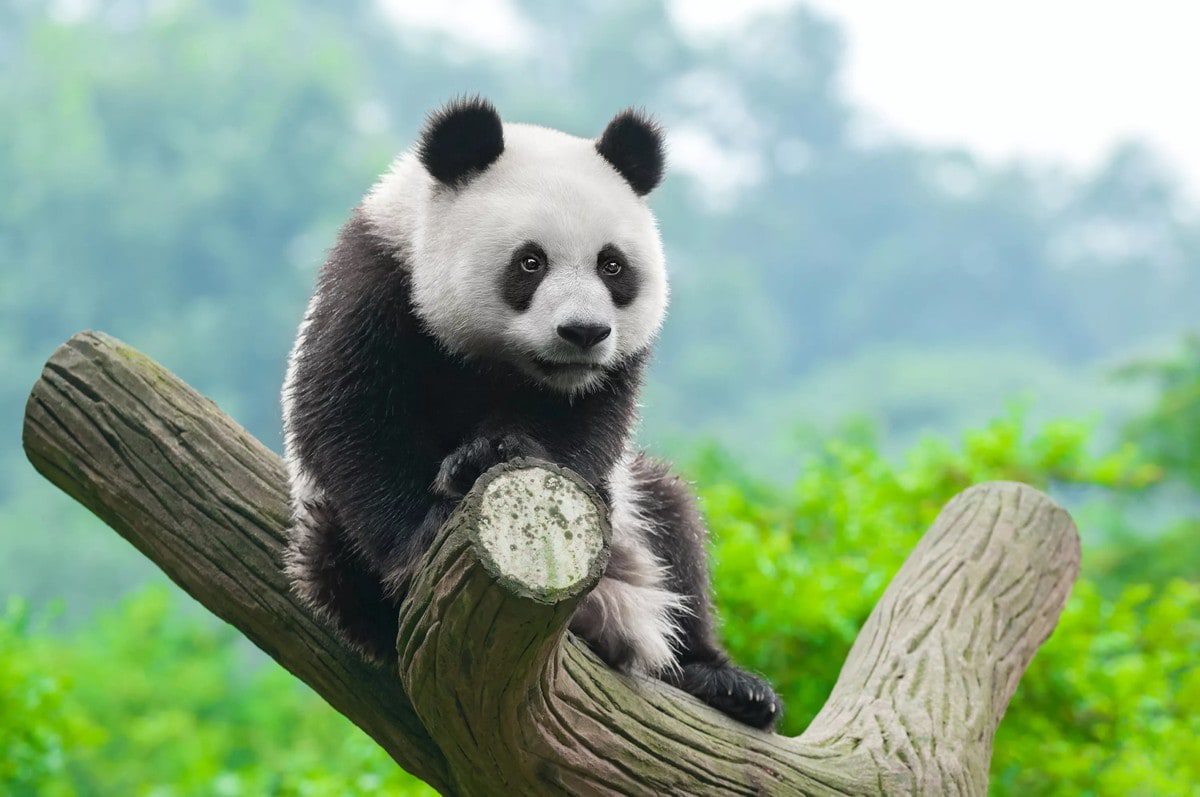
The bamboo bear is an incredibly beautiful powerful animal that belongs to the “bear” classification. The panda has a black and white color, soft fur and beautiful spots around the eyes, reminiscent of glasses. Possesses signs of raccoons. It is difficult to find a more sweet and good-natured creature! Look into his eyes and see for yourself…
One of a kind: the spotted bear (Ailuropus) belongs to the subfamily Ailuropodinae. The panda feeds exclusively on one type of bamboo – at least 30 kg is included in the daily diet of the animal, but the weight refers to adults.
9. National Emblem of China
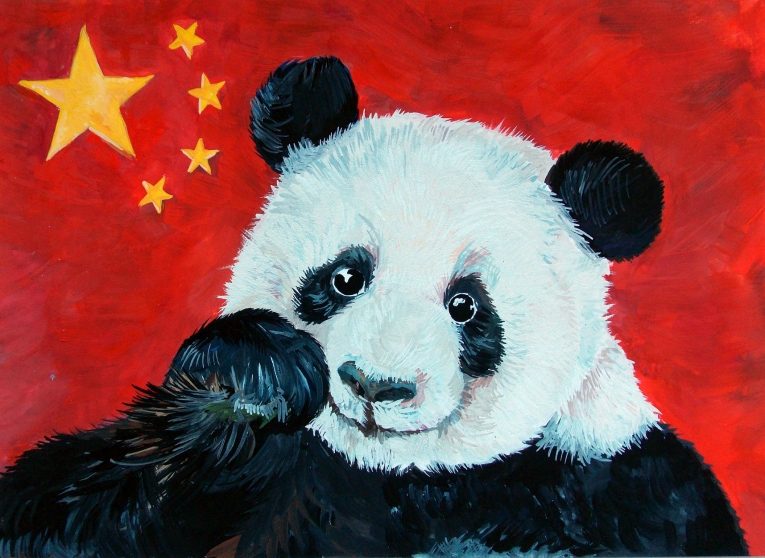
Giant pandas can be seen in China (and also in Tibet), mainly in mountainous regions. This is a huge animal (reaches about 1,5 meters in length, and weighs up to 160 kg.) is a kind of symbol of China. There, pandas became sacred animals – in ancient China, for example, their faces were minted on gold coins, and now, as a sign of special respect, they are used as the most expensive diplomatic gifts.
In China, there is a special reserve of pandas, where experts in their field are engaged in the study and breeding of this unique animal.
8. Front paws – with a “thumb” and five ordinary
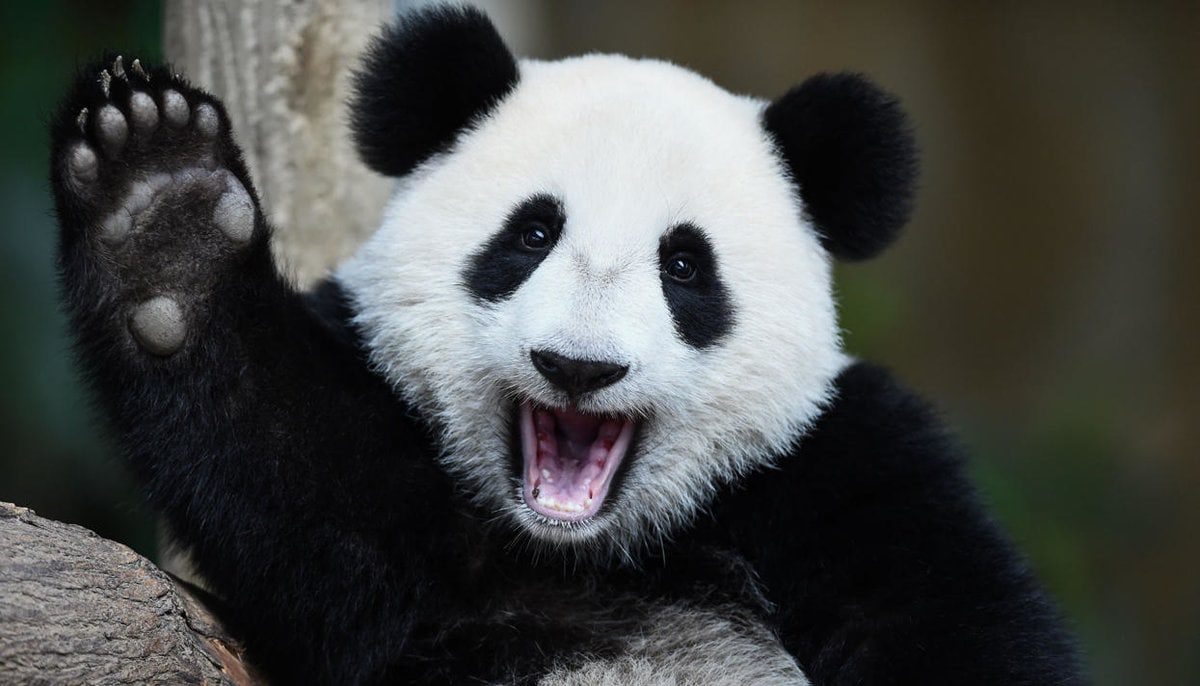
If you look closely at the panda in the photographs, you will notice that They don’t have normal paws. They look like a human hand, and during the meal, the panda, sitting down in a comfortable position, resembles a person.
Nature has provided for everything, the “thumb” on the panda’s foot is actually a modified sesamoid bone of the wrist, thanks to which the animal is easily controlled even with thin bamboo shoots. Without them, by the way, this wonderful vegetarian cannot live a day!
Interesting fact: The human and bamboo panda genomes share approximately 68%.
7. They belong to the order of carnivores, but eat mainly bamboo.
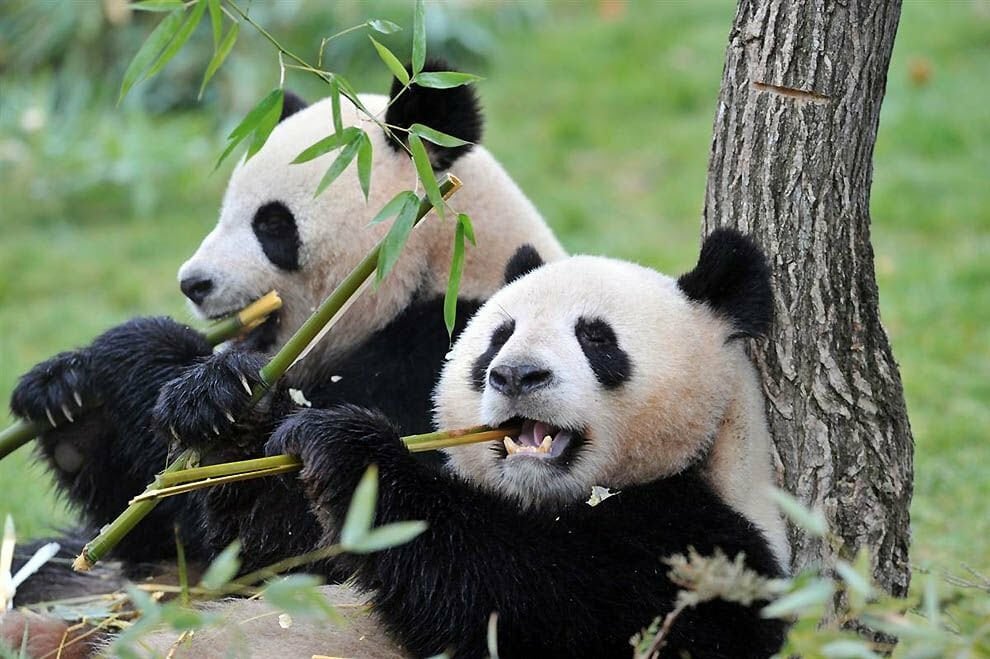
Basically, the giant panda eats bamboo – 98% of the animal’s diet consists of it, but despite this fact, it belongs to the classification of “predators”. In addition to bamboo, the animal can diversify its diet by treating itself to fish, pika or small rodents.
Scientists classified the panda as “predatory” after genetic research. At one time, the animal was classified as a raccoon, but according to the method of nutrition, it is a herbivorous organism. This beautiful animal may be a vegetarian, but still has all the signs of a predatory animal.
Interesting fact: foxes and wolves also prefer variety in their diet – they love melons. If you notice, cats (a detachment of “predatory”) sometimes gnaw on grass.
6. Spend up to 12 hours a day on food
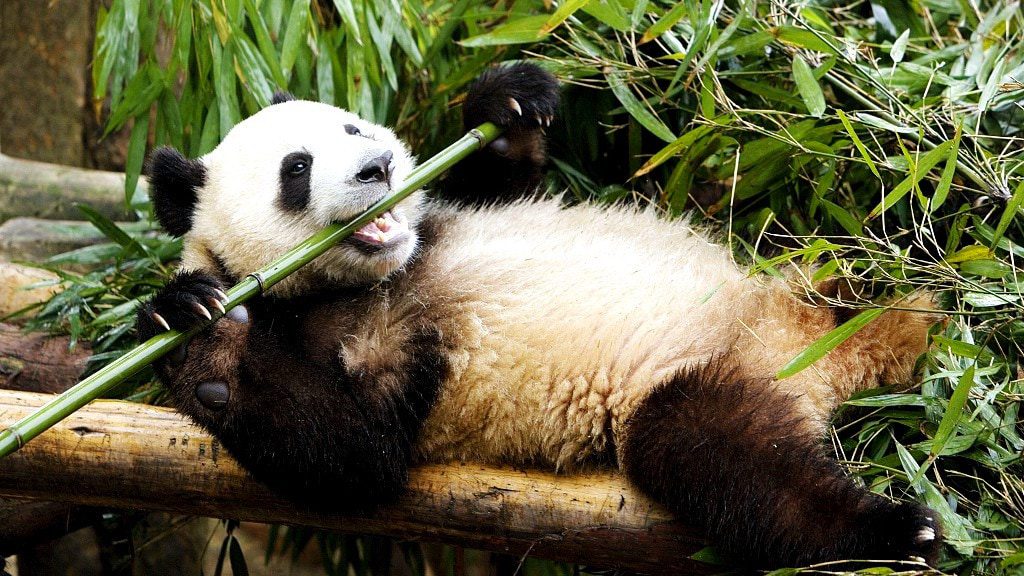
You read that right – this is the amount of time a panda spends eating without regret! For us, people who sometimes do not even have time to have a normal breakfast, doing it literally “on the go”, it seems unimaginable. However, the giant panda spends 12 hours a day eating (mostly eating bamboo), eating approximately 12-15% of its body weight.
The panda does not hibernate, but is active all year round. The thing is that the animal’s diet, consisting of bamboo, does not allow it to accumulate enough fat reserves for the winter.
It is worth noting that pandas live in remote areas of China – bamboo dies every few years, and pandas die with it, unable to find enough food.
5. China provides for the death penalty for killing a panda
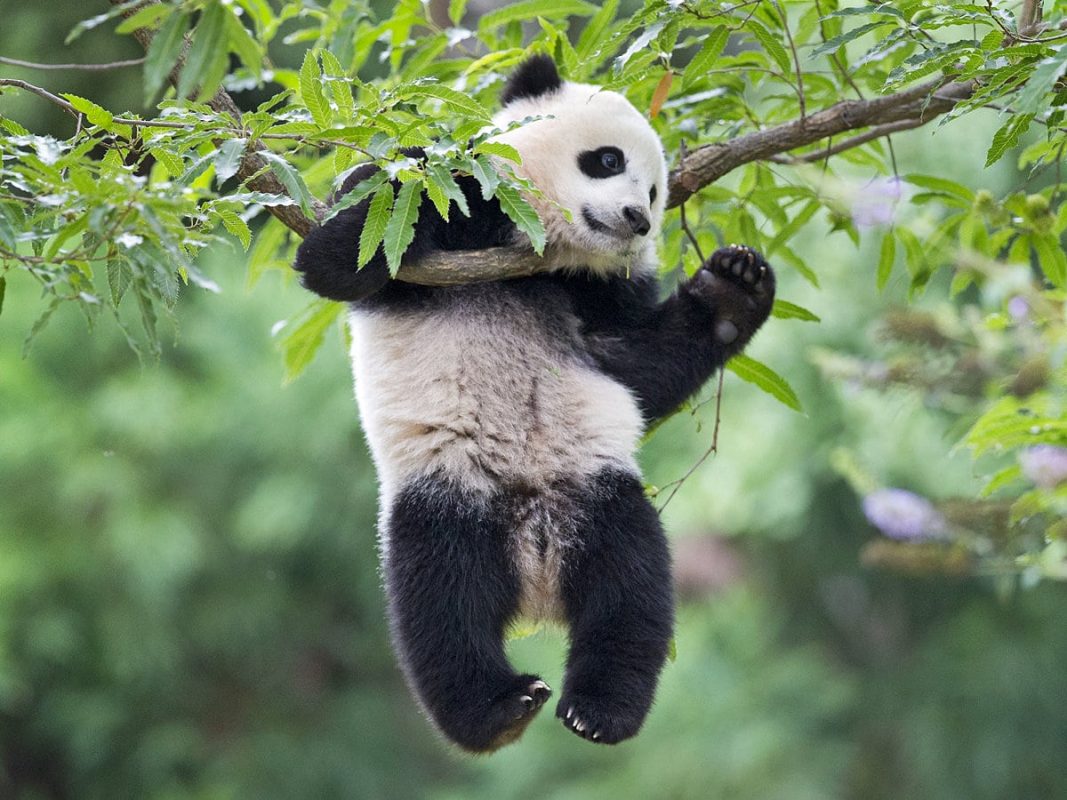
Volunteers and all animal lovers – good news for you! In China, the punishment for killing a giant panda is up to 10 years in prison, and if there are aggravating circumstances of the killer, he can even be sentenced to death. This is the right decision, because there are very few of them left in nature.
By the way, the animal was listed in the Red Book. In China, the panda is a national symbol, so the state is very attentive to the panda population and the conditions for their conservation. It is unlikely that someone will dare to harm an animal by transgressing the law.
4. The red panda, despite its predatory nature, prefers young bamboo
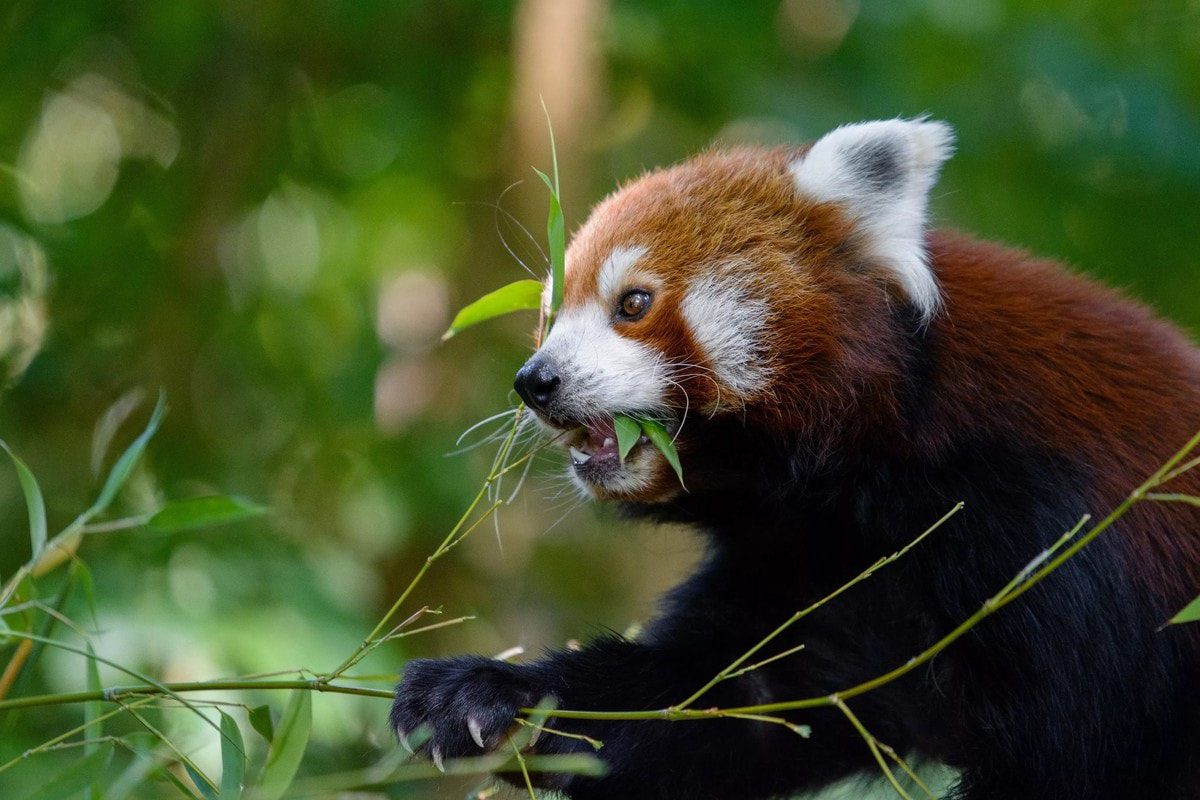
The red panda is also known as the “cat bear” (look at the photo – for sure, you will find features similar to cats in it), “red panda” or “fire fox”. Although this animal is a predator, it feeds on plant foods. Almost all of her diet (95%) consists of bamboo leaves (especially the panda prefers young shoots).
She covers bamboo branches with her front paws and brings food to her mouth with them – at the time of the meal, the animal resembles a person with its habits. A panda can eat in any position: sitting, standing or even lying down, savoring every bite.
Unlike the bamboo panda, the red cellulose is not digested at all, therefore, in winter, eating plant foods, the animal loses a lot of weight (about 1/6 of its mass).
3. In India and Nepal, the cat bear is a pet
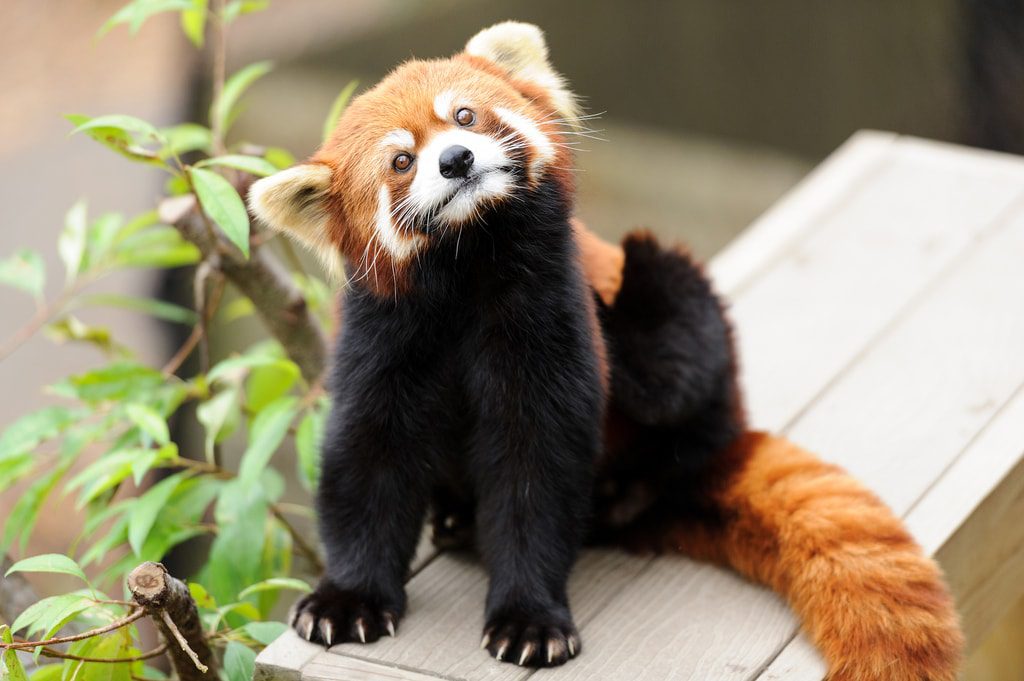
In Nepal and India, such a beautiful and unusual animal is kept by some wealthy families.. Predators become pets. However, the cat bear is not adapted to live among people – the animal requires a certain diet and a habitual way of life.
It is difficult to keep a red panda, not only at home, but even in a zoo. Usually, if someone gets a cat bear as a pet, they soon face a tragic outcome – a panda lives at home for no more than 6 years. The animal often dies due to intestinal disease.
2. Long disputes about the relationship to one or the other family
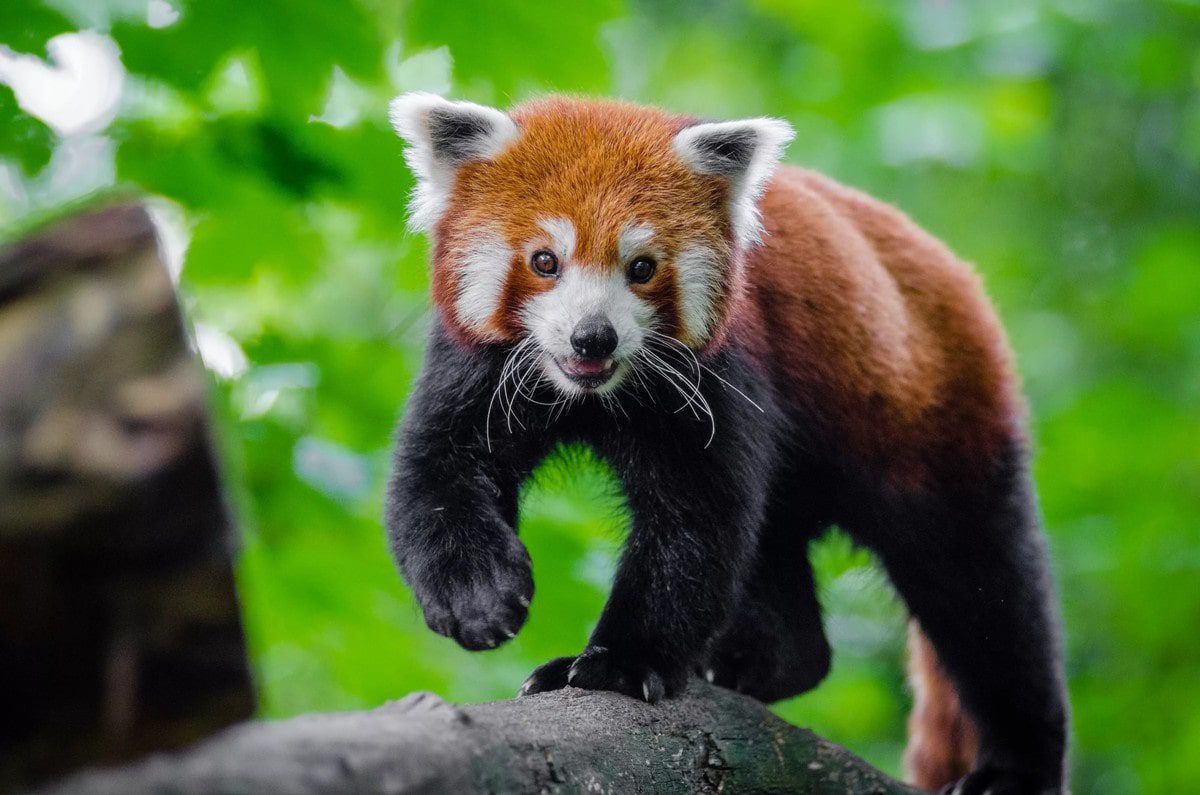
In total, there are 2 types of pandas: large (the second name is “bamboo”) and small (“red”). There have been long disputes between scientists about which family animals belong to., but still now we can accurately find out the answer to the question.
Despite the fact that both of these species are called pandas, they belong to different families. If the bamboo panda, after lengthy disputes, is still assigned to the “bear” family, then the situation is different with the red panda – it is classified as “raccoon” (by the way, the bamboo panda was also included in it for some time).
1. The red panda is a distant relative of the big panda.
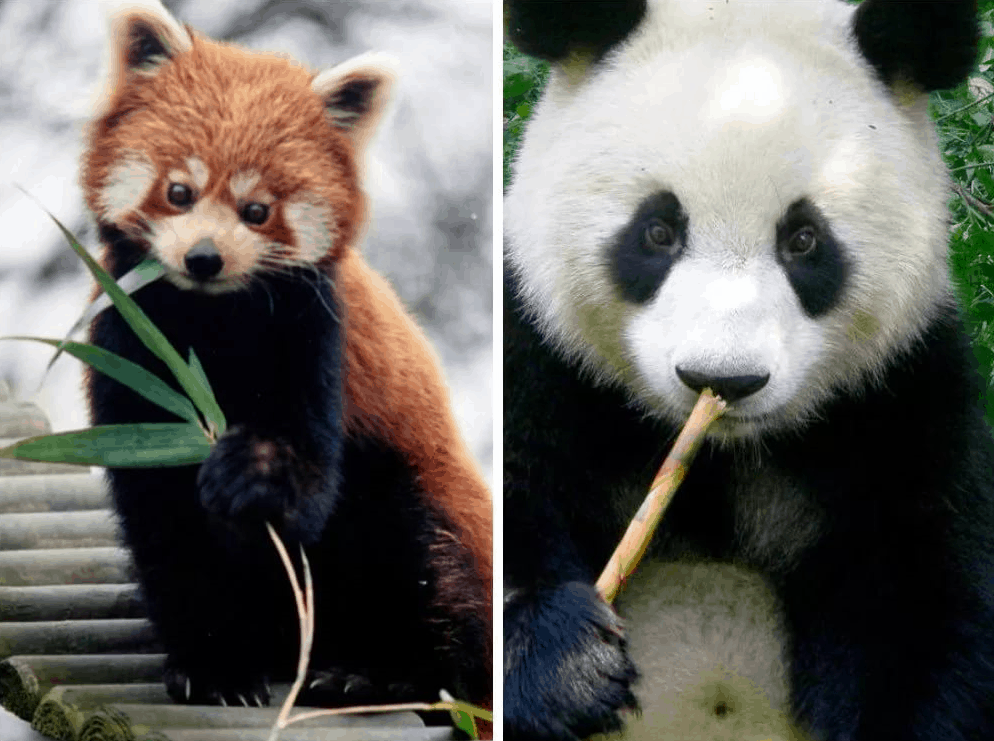
If tracked by classifications, then the red panda is a distant relative of the big one, although outwardly it does not look like a bamboo at all. The red panda is small, reddish in color (more like a fox or a cat in appearance), and it has more resemblance to a raccoon.
Interesting fact: the red panda was only known in Europe in the 1821th century – in XNUMX, Thomas Hardwick made an amazing discovery while exploring the English colonies. The military collected reliable data on the red panda and even suggested calling it in a peculiar way – “Xha” (by the way, the Chinese called the panda this way – the imitation of sounds made by this “xha” was taken as the basis).
And, finally, one more thing. The red panda is a Mozilla brand that you probably know.




